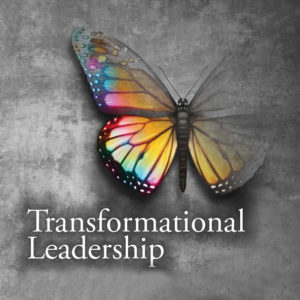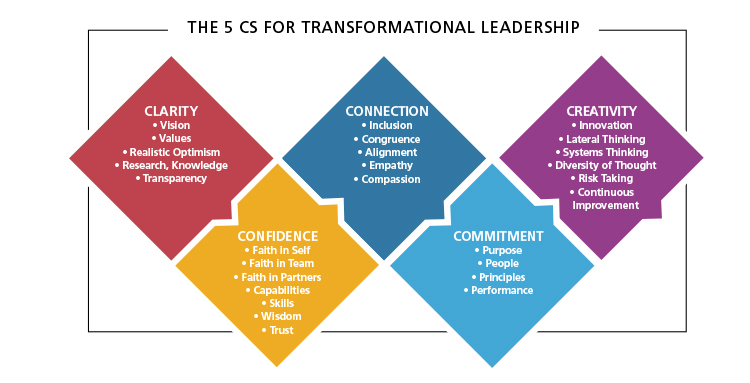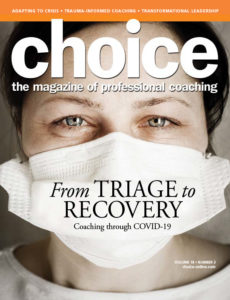5 essentials for activating transformational leadership in times of crisis
By Terry Hildebrandt, PhD, MCC, MCEC & Barbara Mintzer-McMahon, MSW, MFT, PCC, MCEC
 Leaders in almost all organizations have been focused on managing through the COVID-19 crisis for the last several months. This has included shutdown plans, restarting plans, people management, customer management, financial management, and a whole host of other activities typically called “crisis management.”
Leaders in almost all organizations have been focused on managing through the COVID-19 crisis for the last several months. This has included shutdown plans, restarting plans, people management, customer management, financial management, and a whole host of other activities typically called “crisis management.”
However, what has been missing from many organizational conversations is ‘Transformational Leadership,’ which goes beyond the immediate crisis and provides vision and hope for the future. In this article, we focus on the five Cs, which are all essential for activating transformational leadership, especially during and after a crisis. These include: Clarity, Connection, Creativity, Confidence, and Commitment.

1: CLARITY of Vision
Clarity includes developing a vision of future success informed by realistic optimism, research, knowledge, meaning, and transparency. Clarity emerges from conversations with leaders and their followers on their shared picture of success. A crisis often creates ambiguity, and ongoing conversations are required to continuously evaluate the best available researched knowledge to provide decisions on how to move forward.
A medium-term and long-term vision of success provides people with hope that grounds them in knowing that things will get better. This vision is also grounded in the core values of the organization, which serve as a foundation and a set of core principles that can guide collective efforts toward reaching the shared vision.
Coaches can provide a powerful sounding board to maximize the physical and emotional well-being of employees and the financial health of organizations.
Executive and leadership coaches can play a role in challenging organizational leaders to set aside time for their own research and reflection to create a compelling shared vision. Ongoing conversations with key staff are critical to determine what matters most, to deliver key goals, and to enable the organization to thrive in the new reality in the post-COVID for months and years to come.
Coaches can help leaders clarify and commit to core values that serve as guardrails in making key decisions on a daily basis.
2: CONNECTION to Stakeholders
The requirements of social distancing and work-from-home arrangements to reduce COVID-19 infections have created unprecedented challenges for leaders to stay connected with their teams and customers. Fortunately, technology has evolved to the point where work from home has become a possibility for many employees. However, remaining connected requires more focus and effort than ever before.
This includes maintaining alignment on practical matters such as processes to design and deliver products and services and more importantly emotional connection and commitment to the purpose of the organization. Leaders at this time have also been required to show more empathy and compassion for employees who now have the added responsibility for caring for children, elders, and others often in living and working situations that challenge privacy and productivity.
The added stress of managing multiple demands require new corporate policies and expectations around flexibility in being able to deliver on job expectations. Including staff in core business and organizational decisions is more important than ever before.
Coaches have been called upon to add additional value to their clients during this time to provide support in implementing best practices, managing stress, and developing new systems that work in a more distributed workplace environment. Coaches can provide a powerful sounding board to develop processes and organizational cultures to maximize the physical and emotional well-being of employees and the financial health of organizations.
3: CREATIVITY & Innovation
Creativity and innovation have always been the lifeblood of competitive advantage in organizations. The recent crisis has escalated the requirement for rapid innovation in how we deliver products and services and manage organizational processes. This has required organizational leaders to be willing to take calculated risks and to experiment with new systems, policies, and ways of working that previously may have been met with great resistance.
Organizations that previously would never have considered work from home arrangements now find themselves forced to do so given government ‘shelter in place’ restrictions. For example, healthcare systems which previously resisted delivering services remotely now are faced with no other options but to experiment with telemedicine and telemental health. Universities founded on face-to-face education are now teaching courses online as a matter of survival.
Coaches have the opportunity to bring forward best practices such as late
ral thinking, systems thinking, diversity of thought, and continuous improvement to drive creativity and innovation. While all these methods have existed for decades, greater urgency and openness exists among clients to experiment and see the value of these tools and processes.
4: CONFIDENCE in Self & Others
Employees look to leaders to provide direction and guidance, especially during crisis. This requires leaders to develop confidence, based not on certainty, but instead on faith that they have the capabilities, skills, and wisdom to lead a VUCA environment (volatility, uncertainty, complexity, and ambiguity). This includes having faith in themselves, faith in their teams, and faith in other partners to come together in trusting relationships to move forward.
Choosing the right partners, leveraging strengths, past successes, and capacity for collaboration builds faith that you can collectively succeed. Confidence among all the stakeholders is increased through listening carefully to their concerns and collaborating to develop plans to address issues as they arise.
Demonstrating confidence also includes key leaders sharing messages of hope, based in realistic optimism and the facts, to all those concerned including employees, suppliers, shareowners, and customers.
Coaching has long been known to increase confidence in leaders through providing safe space for them to explore fear and anxiety that are inevitable when leading organizations. Coaches can work with clients to support them in creating learning environments that enable them to apply their strengths and wisdom in addressing challenges and crafting core messaging that projects confidence and creates hope and faith for the future.
5: COMMITMENT to Purpose, People, Principles, Performance
Commitment to all the above leadership essentials and to the organization’s purpose, people and principles are required to drive performance to reach the organization’s goals. Revisiting the purpose of the organization is especially critical during and after a crisis to remind key stakeholders of why the organization exists in the first place.
This reminder of the shared purpose brings meaning and stability to any organization and its members further solidifying organizational identity and brand. Commitment to the people of the organization, acknowledging their strengths and collective capacity, also brings stability and reduces fear. Open communication regarding the reality of staffing needs can also provide options for employees to make decisions in their personal lives in cases where the organization may not be able to commit to continued employment.
Revisiting the core values and related operating principles can also provide needed guidance for all leaders within an organization in decision-making and planning. If your organization has not yet invested in documenting core values and operating principles, now is a good time to decide on these and communicate them broadly. Taken together, commitment to purpose, people, and principles can set your organization up to achieve performance goals through a more committed workforce.
Many coaches specialize in helping leaders and their teams develop statements of purpose, values, and people strategies. Leadership coaches can challenge executives and managers to revisit these core elements of organizational design and include commitment as part of communications to employees, customers, shareowners, and other stakeholders. Coaches also are well-suited to support leaders in the deeper personal reflection required to clarify their clients’ personal life purpose, mission, and values which they can draw upon in leading their organizations.
During a crisis, leaders are often focused on the tactical details of managing and may deprioritize transformational leadership. By also focusing on the essential elements Clarity, Connection, Creativity, Confidence and Commitment, leaders can provide medium-term and longer-term vision, hope, confidence, and commitment required to deliver on organizational goals.
Executive and leadership coaches are well-suited to support leaders through a time of crisis and beyond, by focusing on activating the required skills and processes of transformative leadership.
For more information contact:
Terry H. Hildebrandt, PhD, MCC, MCC at thildebrandt@fielding.edu.
Join Over 7,500 Fielding Alumni Located Around The World!
Change the world. Start with yours.™






Get Social